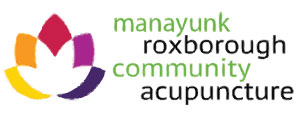Here’s Why Cupping Is All The Rage—And Why You Should Jump On The Bandwagon
By Julia Sanfilippo (originally posted on Acutakehealth.com)
Have you seen this cool new ad from Under Armour featuring 22-time Olympic-medal winner Michael Phelps? It is an inspiring video that shows the strength, determination, and recovery required to be a record-setting world champion. If you pay close attention starting 44 seconds into the video, you’ll see Phelps getting cupping!
Cupping is a Chinese medicine technique that has been used for centuries for many different conditions. Acupuncturists commonly use cupping as an adjunct therapy to acupuncture. For people with needle fears, cupping on its own can offer a great alternative treatment.
Phelps isn’t the only famous person to discover the benefits of cupping. Celebrities such as Jennifer Aniston and Gwyneth Paltrow have been photographed with distinctive cupping marks on their backs and shoulders. What was once a mysterious, almost scary-looking treatment in the West is now hitting the mainstream due to its numerous health benefits.
What is cupping?
To perform cupping, acupuncturists place glass, bamboo, or silicone cups on the skin, creating a vacuum-like seal. There are different techniques for creating this vacuum, including lighting an alcohol-soaked cotton ball inside the cup or attaching suction pumps to the end of the cups.
When the cups are placed on the skin, the superficial muscle layer is drawn up into the cup, which stimulates the circulation of blood, breaks up adhesions, and creates a pathway for toxins to be drawn out of the body through the lymphatic system. Cupping can affect tissues up to four inches deep—impacting blood vessels, fascia, muscles, and scar tissue.
More and more, cupping is showing up in physical therapy and massage offices as well, under a different name—myofascial decompression (MFD). MFD is essentially the same thing as cupping, and it is being used in the Olympic games for pre and post-workout recovery and detoxification.
Cupping decompresses adhesions and scar tissue, relaxes muscles in spasm, decreases trigger-point pain, and decreases tissue changes and inflammation following trauma. Cumulative treatments increase muscle endurance, circulation, and lymphatic drainage. They enhance athletes’ overall ability to recover from workouts and strenuous activity. No wonder Phelps is using it!
Where do the cups go?
Most pictures of cupping show it being done on the back, and that is a common place to receive cupping. However, cupping can be done on any part of the body where there’s enough skin to support the cups. (See below for a list of conditions that cupping can help with.)
There are two types of popular cupping techniques, stationary and gliding cups. Stationary cups are where one or several cups are placed in the treatment zone for 5-10 minutes. Gliding cups are when a topical ointment or liniment is placed on the skin and then the cups are gently moved across the skin, usually along meridians or fascia/muscle planes. I like to use Tiger Balm—not the kind you buy at CVS, the real stuff!—with gliding cups on tight and sore muscles.
What does cupping feel like?
Judging from the marks cupping leaves on the skin, you would think it would be a painful experience. Quite the opposite! Cupping is usually very pleasant, like a unique form of massage.
Cupping is different from massage in that with massage, the tissues are pressed, whereas cupping is the opposite—the tissues are pulled up. Cupping feels like a gentle suction is pulling away tension from tight and painful areas of the body.
Why does cupping leave marks on the skin?
Depending on the amount of suction and the state of the underlying tissues, cupping can leave circular marks on the skin that range from a light yellow to pinkish red to dark purple. From an acupuncture perspective, the darker the marks, the more stagnation of qi and blood in that area. Stagnation leads to pain and dysfunction within tissues, so cupping—like acupuncture—aims to clear the stagnation before it causes problems.
From a Western standpoint, cupping creates more space between the tissue layers to get rid of dead cellular debris and excess fluids and toxins. It also breaks up scar tissue. The marks, then, are caused by this debris being pulled up and deposited under the skin, which is actually the most effective place for the lymphatic system to drain it away.
What are the benefits of cupping?
To recap, here are the benefits of cupping:
Stimulates whole-body relaxation response (parasympathetic response)
Stimulates oxygenation and detoxification of blood while promoting a feeling of lightness and tension relief
Detoxifies metabolic debris in muscle tissue, fascia, and skin
Increases range of motion, breaks up adhesions, and promotes healing in scar tissue and chronic injury sites
Increases lymphatic drainage and promotes circulation
Given these benefits, here are some of the conditions for which cupping can be really helpful:
Tight and stiff muscles
Back pain and sciatica
Piriformis syndrome and IT band pain
Rotator cuff injuries
Plantar fasciitis
Migraines
Respiratory conditions, including asthma and bronchitis
Anxiety, depression, and stress
High blood pressure (by calming the nervous system)
Cellulite
Are there any cautions to be aware of with cupping?
As I mentioned, cupping can leave marks on your skin. It may take a few days to a week to fade completely. This is important to remember if you have a wedding or special event to attend!
Keep the area where you received cupping covered from extreme changes in temperature (for example, a hot sauna or cold air conditioning) immediately after treatment. Cupping opens your pores, making you more susceptible to catching a cold.
Do not receive cupping on the low abdomen or low back if you are pregnant.
Do not receive cupping on areas where you have thin or damaged skin, or if you are taking blood thinners.
Still unsure whether cupping is for you? Here’s some inspiration:
https://www.youtube.com/watch?v=Xh9jAD1ofm4


